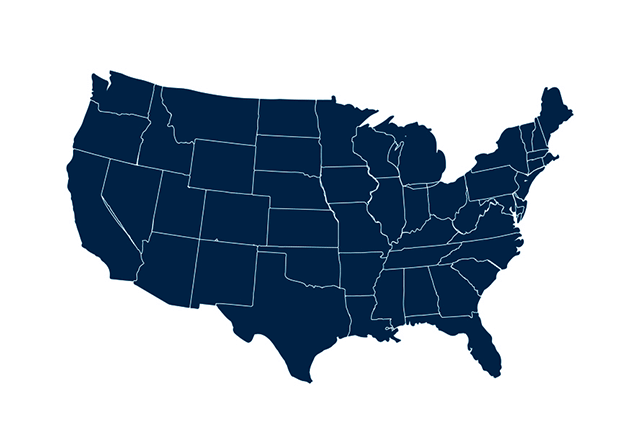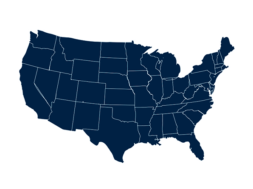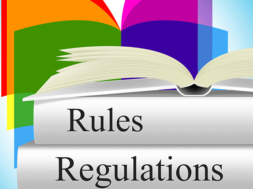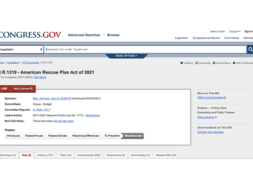
Department of Education’s New Accreditation Rule Encourages Competition Among Agencies
By Katherine Demedis, Associate, Education Group at Powers
On Nov. 1, 2019, the U.S. Department of Education published final regulations that, among other things, change the eligibility requirements for accrediting agencies seeking recognition by the Department, eliminate the distinction between regional and national accrediting agencies, and provide an opportunity for sanctioned schools to change accreditors or maintain multiple accreditors. The new regulations which will be effective July 1, 2020, were initially published in a Notice of Proposed Rulemaking (NPRM) on June 12, 2019, after the negotiated rulemaking committee reached consensus on the content of the rule – a rare occurrence in the last decade.
Eligibility requirements for recognition
An accrediting agency must be recognized by the Department in order for its accredited institutions to be eligible to participate in the Title IV federal student aid programs. Accreditation by a recognized agency is also used as a requirement for institutions or programs seeking approval or authorization by some state agencies, programmatic accrediting agencies, and by the National Council for State Authorization Reciprocity Agreements (NC-SARA). As such, being accredited by a recognized accrediting agency is very helpful to a postsecondary institution.
The new regulations change the basic eligibility requirements for accrediting agencies seeking recognition, which currently include: 1) Federal link, 2) Geographic scope, 3) Accrediting experience, and 4) Acceptance by others. In general, the changes make it easier for new accrediting agencies to become recognized, thereby potentially increasing competition among agencies.
Federal link
Under the current and the revised versions of 34 C.F.R. § 602.11, an institutional accrediting agency must demonstrate that its accreditation is a required element in enabling at least one institution to establish eligibility to participate in the Title IV programs. The new rule adds language stating an agency can satisfy this requirement if an agency accredits an institution that 1) participates in the Title IV programs and 2) could designate the agency seeking recognition as its link to the Title IV program, even if the institution currently designates another institutional accrediting agency to establish its eligibility.
In the NPRM, the Department pointed out the cart-before-the-horse aspect of the rule, noting that until a new agency is recognized, it is highly unlikely that an accredited institution would relinquish its current accreditation that enables it to be eligible for Title IV, to rely on accreditation by an agency that is not currently recognized. The most recent revisions are meant to “decrease barriers to entry and enable new agencies to more easily enter the marketplace.”
Geographic scope
The Department also modified its geographic area eligibility requirement for accrediting agencies seeking recognition at 34 C.F.R. § 602.11. Today, an accrediting agency must demonstrate that its activities cover 1) a State (if the agency is part of a State government), 2) a region that includes at least three States reasonably close to one another, or 3) the entire United States. Under the revised rule, a region must include any state where an agency accredits a main campus, a branch campus, or an additional location of an institution and clarifies that the agency does not need to accredit a main campus in that state in order to include that state in its region. Thus, a regional accrediting agency will be required to publish a list of states in which it operates and include states that have not historically been part of its region if it accredits a location of an institution located in that state. However, regional accreditors are still allowed to limit the scope of their own membership; the revised rule clarifies that an accrediting agency will not be forced to accept applications from other institutions in a state where it only accredits a branch campus or additional location.
In conjunction, the Department revised the definition of “scope of recognition” in 34 C.F.R. § 602.3 to remove the reference to the “geographic area of accrediting activities.”
As it explained in its June 2019 Notice of Proposed Rulemaking, the Department determined that the current practice of limiting the scope of an accreditor’s approval to a geographic region is outdated because regional accrediting agencies currently accredit institutions with branch campuses and additional locations outside of the stated geographic scope. In addition, the Department wants to encourage competition by allowing agencies to accredit institutions that have historically been located in another region. Along these same lines, accrediting agencies will no longer be required to seek approval to expand their geographic area – instead an agency will be required to notify the Department and publicly disclose the change on its website under 34 C.F.R. § 602.12(b)(1).
Accrediting experience
Accrediting agencies seeking recognition also are required to have conducted accrediting activities for at least two years prior to seeking recognition under 34 C.F.R. § 602.12. The Department has now relaxed that requirement by exempting an agency seeking initial recognition that is affiliated with, or is a division of, an already recognized agency from the two-year requirement.
The rationale for this change is that in cases where recognized accrediting agencies re-organize or spin off a portion of their accrediting business by setting up a separate agency, the new entity has substantial accrediting experience obviating the need for a demonstration of two years of accrediting experience.
Acceptance by others
The Department removed the requirement that an agency must demonstrate acceptance by others, such as educators, educational institutions, and licensing bodies, practitioners, and employers under 34 C.F.R. § 602.13.
Several commenters objected to the decision to remove this requirement, arguing that wide acceptance by one’s peers is an important criterion to ensure adequate oversight of institutions of higher education.
The Department responded that it believed § 602.13 is duplicative of other requirements and that the revisions to § 602.32(b) requiring an agency seeking initial recognition to submit letters of support from accredited institutions or programs, educators, or employers and practitioners, explaining the role for such an agency and the reasons why they believe the Department should recognize the agency, would satisfy the same objective.
Commenters also generally questioned whether these changes meant to encourage new accrediting agencies to apply for recognition were needed and said that the Department did not provide evidence that new accrediting agencies are having trouble seeking recognition. In response, the Department pointed to the fact that very few new institutional accrediting agencies have been recognized under the current regulations.
Distinction between national and regional institutional accreditors
Institutional accrediting agencies in the United States have long been divided into national and regional agencies, with the seven regional accrediting agencies often viewed as more prestigious than their national counterparts. However, the Department’s new accreditation rule implements several changes intended to eliminate the distinction between regional and national accrediting agencies.
In addition to the changes to geographic scope discussed above, the Department will no longer categorize institutional agencies as regional or national but will instead refer to all of the agencies it recognizes as “nationally recognized” accrediting agencies, which more closely aligns with the Higher Education Act. However, agencies will not be prohibited from identifying themselves as regional or national accreditors as they see fit.
One item to watch for is whether other entities will follow the Department’s lead and stop relying on the distinction between regional and national accrediting agencies. For example, many regionally accredited institutions will, as a matter of practice, only accept transfer credit from other regionally accredited institutions. State agencies, programmatic accreditors, and licensing bodies also sometimes require regional accreditation, as opposed to national accreditation, as a prerequisite for approval, accreditation, licensure, etc.
To this end, the Department addressed directly the assumption that regional accreditors require higher academic quality, pointing out that regional accreditors have a “pervasive lack of focus on student learning and student outcomes” as compared to the national accreditors and suggesting that regional agencies benefit from the reputations of a small number of their highly selective member institutions. The Department also stressed that it has historically applied the same standards for recognition to both national and regional accrediting agencies, and so there is no meaningful qualitative difference between regional and national accreditors in the Department’s view.
Maintaining dual accreditation or changing accreditors
In another move that could increase competition among accrediting agencies, the Department’s changes to 34 C.F.R. § 600.11 allow institutions that are or have been subject to an adverse action by their current accrediting agency to change accreditors or maintain accreditation by more than one institutional accreditor.
Under the current rule, an institution seeking to change accrediting agencies or maintain multiple accrediting agencies must demonstrate reasonable cause for the change. Moreover, an institution is not considered eligible for the Title IV programs within 24 months of having its accreditation withdrawn, revoked, or otherwise terminated for cause, or having withdrawn voluntarily from its accreditation status under a show-cause or suspension order.
As amended, the new rule allows the Department discretion to determine the institution has reasonable cause to obtain accreditation during the 24 month window even if the institution has been subject to one of these adverse actions.
For example, the rule allows the Department to determine that reasonable cause exists for a change in accreditors if the accrediting agency did not provide the institution due process or applied its standards inconsistently, or if the adverse action was the result of an agency’s failure to respect the institution’s mission, including a religious mission.
For an institution seeking to maintain multiple accreditations, the Department may determine there is good cause if the institution’s primary interest in seeking multiple accreditations is based on that agency’s geographic area, program-area focus, or mission, even if the institution has been subject to an adverse accreditation action in the past 24 months.
According to the Department, the new rule strikes a balance between preventing struggling institutions from avoiding the consequences of an adverse action while also maintaining recourse for institutions that have been treated unfairly or have legitimate reasons for seeking multiple accreditations unrelated to findings or allegations of noncompliance.
Commenters to the proposed rule expressed concern, however, that these changes would permit institutions to more easily switch to a new accrediting agency or maintain a back-up agency, enabling institutions to skirt enforcement. The Department disagreed – noting that institutions are still required to submit information about their prior or current accreditation to the Secretary and to demonstrate reasonable cause.
Arguably, this rule change fills a void. Although the Department’s rules require accrediting agencies to provide institutions with due process in order to maintain recognition from the Secretary, the Department has previously not had the authority to provide relief to individual institutions when an accreditor violates that requirement. For a school that is in danger of having its accreditation withdrawn and believes that its accreditor has violated its right to due process, the revised rule could provide a second chance. Of course, even if a school convinces the Department that it has reasonable cause to change accreditors under circumstances described above, the process of becoming accredited by a new agency is typically complex and time-consuming, and consistent with current rules, the new accreditor must explain to the Department why the other accreditor’s adverse action does not preclude its grant of accreditation. A school may find it difficult to obtain new accreditation in time to maintain its Title IV eligibility before its current accreditor moves to withdraw accreditation. Still, they now have a fighting chance.
KATHERINE DEMEDIS is an associate in the Education Group at Powers. She advises educational institutions regarding compliance with state and federal standards and monitors legislative, regulatory, interpretive guidance, and other developments on a variety of federal education matters. Among other things, Katie advises educational institutions regarding compliance with the U.S. Department of Education’s regulations and the standards of national and regional accrediting agencies. She also focuses on monitoring developments around the Clery Act and Title IX compliance.
Prior to joining the firm, Katie taught middle school English in New York City for three years as a Teach for America corps member. This experience made her aware of the unique challenges that schools serving low-income student populations face and taught her that understanding the relevant laws and regulations is not enough – it is also critical to grasp the practical application of both, and the nuances involved in finding workable solutions to problems.
Contact Information: Katherine Demedis // Associate // Education Group at Powers // 202-466-6550 // Katherine.Demedis@PowersLaw.com // http://www.powerslaw.com/











